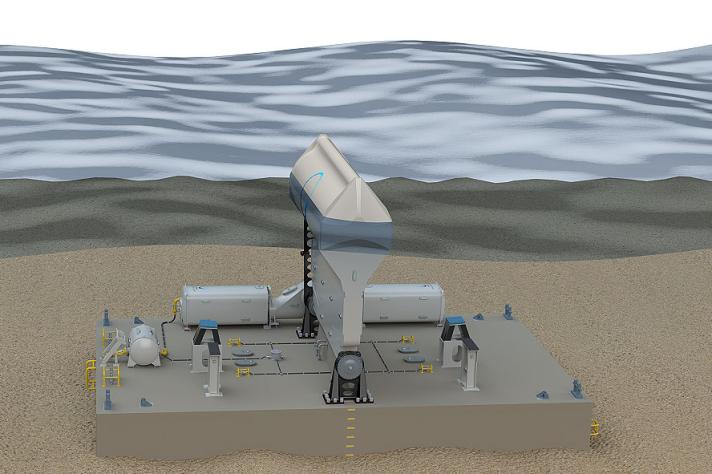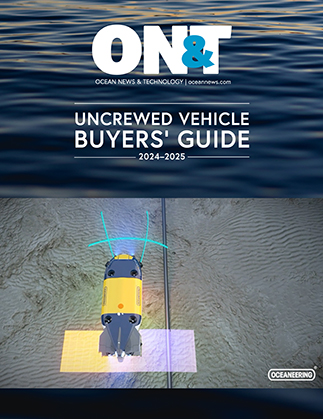The benefits of wave energy
Unlike some renewable sources, wave conditions are highly predictable, allowing grid operators to forecast them days ahead with remarkable accuracy. This predictability, coupled with the extended use of wave energy converters is expected to provide up to 10% of the EU’s energy by 2050, reducing the need for fossil fuel backup generators.
The EU aims to have at least 42.5% of renewable energy by 2030. The objective for ocean energy is to have at least 1 GW of installed capacity by 2030 and 40 GW by 2050. 40 GW of installed capacity would be enough to supply roughly 40 million homes.
The WaveFarm project
Finnish enterprise AW-Energy has successfully developed WaveRoller, a technology that converts ocean wave energy to electricity. The machine operates in near-shore areas (approximately 0.3-2 km from the shore) at depths of between 8 and 20 meters. Depending on tidal conditions it is mostly or fully submerged and anchored to the seabed.
With the support from the EU-funded WaveFarm project, AW-Energy worked on scaling up wave energy production to industrial levels.
 Rendering of the latest WaveRoller device in the water (Image credit: AW-Energy)
Rendering of the latest WaveRoller device in the water (Image credit: AW-Energy)
Thanks to the project, AW-Energy has been able to:
- adapt the WaveRoller unit and related processes for serial manufacturing and for the installation of multiple WaveRoller units into a WaveFarm array (with 10 to 24 WaveRoller devices)
- broaden the portfolio of devices to meet customer WaveFarm needs, from a smaller scale WaveRoller-X to WaveRoller-C1 and larger C2
- develop the business and service models to enable replication and scale-up of the project.
According to Matthew Pech, CFO of AW-Energy, WaveRoller can “deliver electricity closer to baseload power than other renewables and keep Europe at the forefront of innovative renewable technologies.” The WaveFarm project “enabled AW-Energy to take significant steps towards positive cash generation, both for the company and the European ocean energy sector, by readying the technology and the company for commercial deployment of the devices, and in developing the sales pipeline itself. ”
Future developments
AW-Energy envisions a global project pipeline of 150 MW for the WaveFarm solution, unlocking economic benefits and job creation in the EU.
Through the implementation of the WaveFarm project, AW-Energy anticipates an addition of €275 million to the European economy and the creation of 500 jobs over the next decade. Deploying WaveRoller technology is projected to reduce 250,000 tons of CO2 emissions by 2030, making a substantial contribution to the transition to a sustainable blue economy. In addition, WaveFarms have been shown to attract fish stocks, which will benefit local fishing industries.
WaveFarms can also contribute to local manufacturing and consequently increased employment and work.

